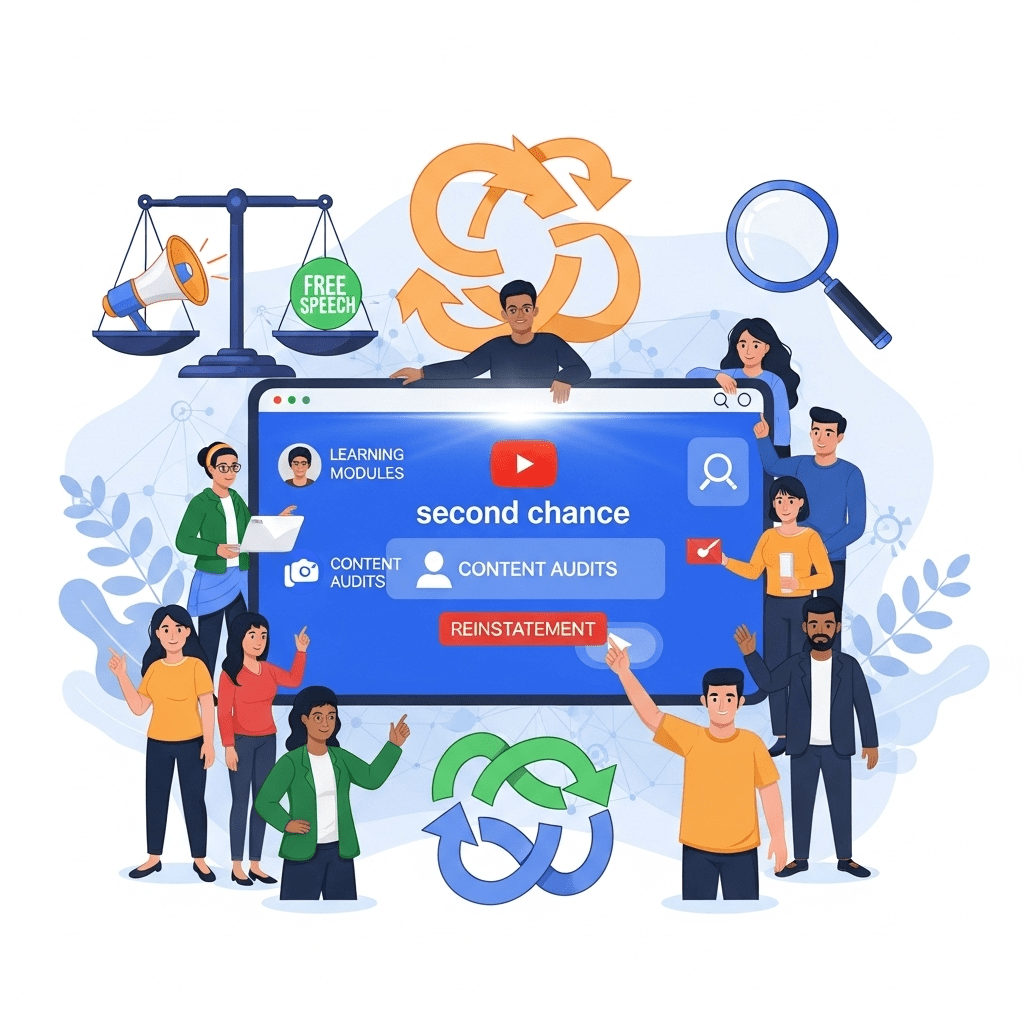In a landmark move for digital platforms, YouTube opens ‘second chance’ program to creators banned for misinformation, signaling a significant policy shift that could reshape how content moderation and platform accountability are perceived in 2025. This announcement offers previously banned creators an opportunity to restore their channels under new guidelines, raising questions about platform responsibility, misinformation risks, and the evolving nature of online discourse.
Why YouTube Opens ‘Second Chance’ Program to Creators Banned for Misinformation
YouTube’s decision to launch a ‘second chance’ program for creators previously banned for sharing misinformation reflects mounting pressure on tech giants to balance free speech with the need to curb harmful narratives. The initiative comes after years of criticism around algorithmic moderation and the permanence of bans, especially for creators whose content sits in gray zones of policy interpretation. By introducing this program, YouTube aims to provide a pathway for content creators to re-engage with audiences while adhering to clearly defined standards moving forward.
The Mechanics of the Second Chance Program
Eligibility for this program is not open-ended. Creators must apply for reinstatement and commit to strict compliance measures, including mandatory educational modules and regular audits of their content. YouTube has stated that re-banned creators may be permanently barred, underscoring the seriousness of repeated violations. The program rollout follows updated guidelines in partnership with independent fact-checking organizations, adding layers of verification before flagged channels are allowed back online.
Implications for Investors and the Digital Economy
As YouTube opens ‘second chance’ program to creators banned for misinformation, the move is poised to impact not just the platform’s content ecosystem, but also its advertiser relationships and investor confidence. Enhanced transparency and structured remediation could make YouTube a more attractive environment for brands wary of controversial content adjacency. For investors seeking emerging technology opportunities, this signals YouTube’s continued evolution in platform governance—a positive marker for platform resilience and user growth.
Debate: Free Speech, Accountability, and Platform Risk
This new program reignites the debate between free speech advocates and those who prioritize combating online misinformation. While some hail the approach as pragmatic and restorative, others are concerned it could enable repeat offenders to skirt consequences. YouTube’s measures, including enhanced monitoring and platform transparency, aim to strike a balance between these competing priorities. Investors with an interest in digital regulation trends will watch closely to see if this blueprint is adopted by other platforms.
Global Impact and Industry Reactions
The announcement has reverberated beyond U.S. markets, with global content creators weighing the implications for their own channels. Many see it as an opportunity for growth, education, and reputation rehabilitation. Meanwhile, similar video-sharing platforms may feel pressure to introduce comparable programs to remain competitive. Industry analysts note that YouTube’s approach may set new standards for tech accountability and content curation in the age of algorithmic amplification and misinformation risks.
Looking Forward: Strategic Considerations for Stakeholders
As YouTube opens ‘second chance’ program to creators banned for misinformation, the tech sector and investment community alike will monitor compliance rates, policy effectiveness, and user sentiment. Stakeholders evaluating related platform governance strategies should keep an eye on metrics such as reinstatement success, recidivism rates, and advertiser retention in the coming quarters. The move underscores the reality that in 2025, content platforms cannot afford to be static in their moderation policies, especially as AI-driven content continues to proliferate.
Conclusion
YouTube’s rollout of the second chance program for misinformation-banned creators sets a significant precedent for digital platforms balancing growth with responsibility. For investors and industry watchers, it is both a risk management experiment and an indication of the ongoing evolution in tech platform governance.
